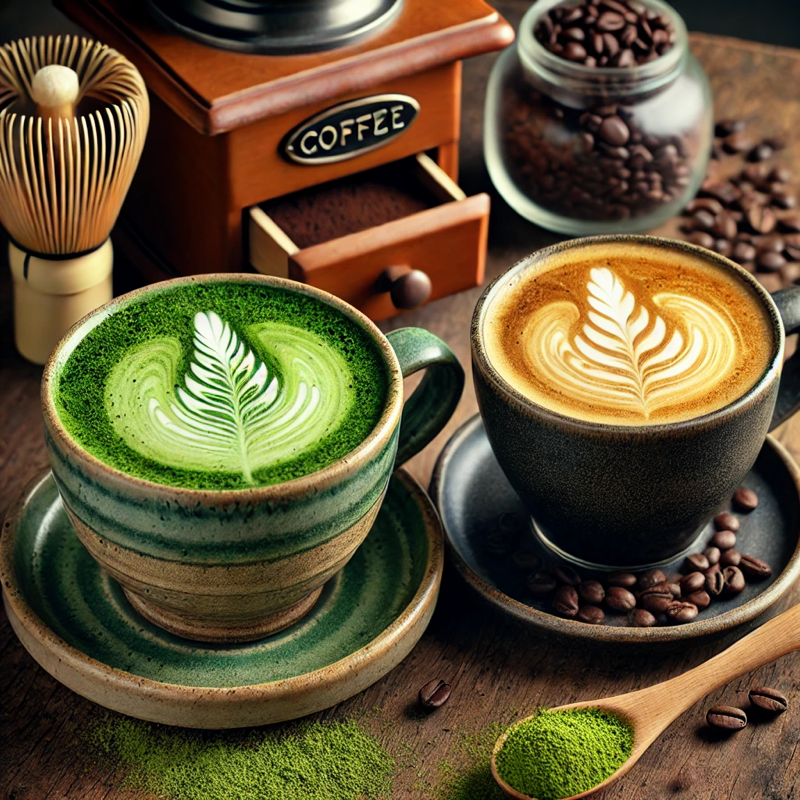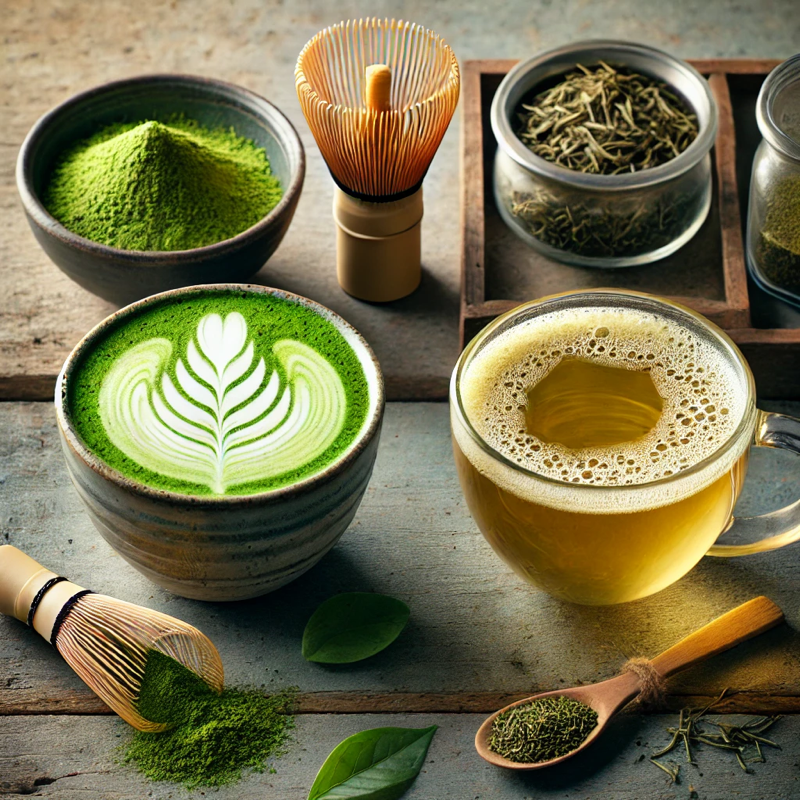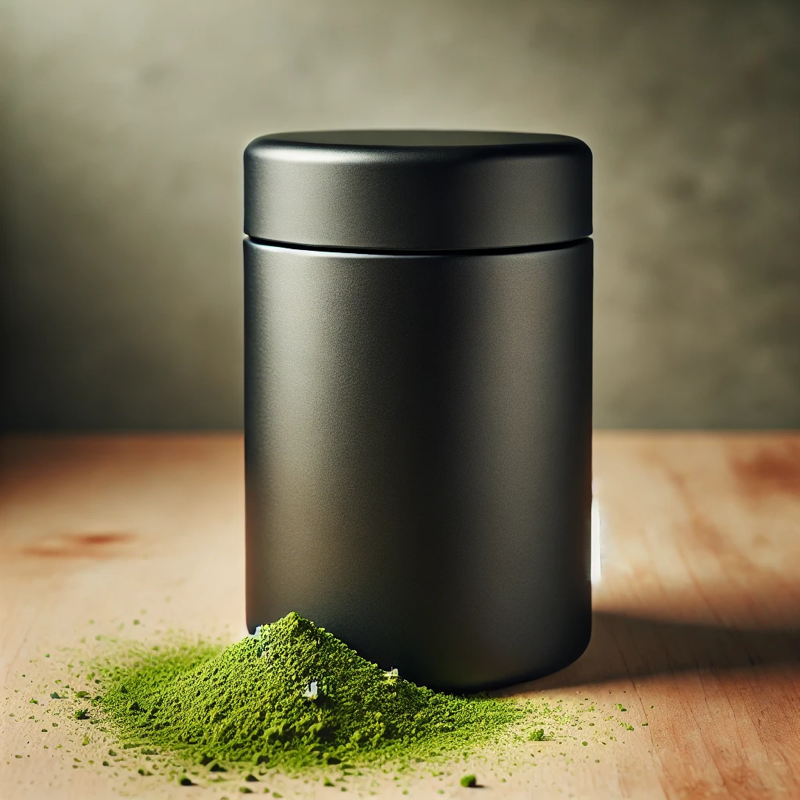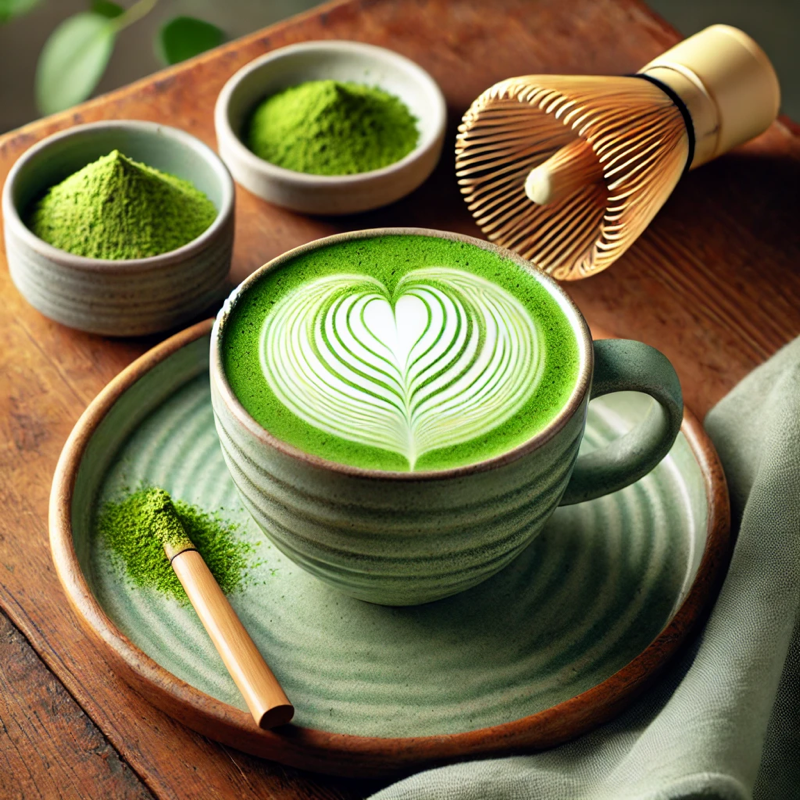Introduction
Matcha lattes are gaining popularity as a vibrant, healthy alternative to coffee. Combining the unique taste of finely ground green tea leaves with creamy milk, this drink is a favorite in coffee shops and homes alike. Using high-quality ceremonial grade matcha is essential for preparing traditional matcha tea drinks, ensuring the best flavor and health benefits. This guide will help you master matcha latte preparation while exploring its health benefits and cultural roots.

What is Matcha?
Matcha is a finely milled powder derived from the leaves of the Camellia sinensis plant, the same source used to produce traditional green tea. However, matcha stands out due to its unique cultivation and processing methods. Unlike regular green tea, which is steeped in hot water, matcha is shade-grown for several weeks before harvest. This process increases its chlorophyll and amino acid content, resulting in a vibrant green color and a rich, umami flavor. After harvesting, the leaves are steamed, dried, and stone-ground into a fine powder. When you drink matcha, you consume the entire leaf, allowing you to benefit from its full nutritional potential. This method of preparation ensures that matcha is packed with antioxidants, vitamins, and minerals, making it a powerhouse of health benefits.

History and Origins
The Ancient Tradition of Matcha Tea in Japan
Matcha has been a cornerstone of Japanese tea ceremonies for centuries. Its origins trace back to the Tang Dynasty in China, but it gained prominence in Japan as a meditative drink for Zen monks.
How Matcha Evolved into the Modern Latte
The modern matcha latte combines traditional ceremonial practices with Western-style lattes, creating a fusion of culture and taste.
What Makes Matcha Latte Special?
Ceremonial Grade vs. Culinary Grade Matcha
Ceremonial-grade matcha, like Yōko Matcha’s Organic Ceremonial Grade Matcha, is sourced from first-harvest tea leaves in Shizuoka, Japan. Its vibrant color and smooth flavor make it ideal for lattes. Culinary-grade matcha is more robust and best suited for cooking or baking.

Matcha Latte vs. Regular Green Tea
Unlike regular green tea, matcha is made by consuming the entire tea leaf, delivering ten times more nutrients.
Choosing the Right Matcha Powder
Selecting the right matcha powder can be a bit daunting with so many options available. To ensure you get the best quality, look for a high-quality ceremonial or premium grade matcha made from 100% ground green tea leaves. The color of the matcha powder should be a vibrant, bright green, indicating freshness and high chlorophyll content. The texture should be silky smooth, and the flavor should be rich with a slight bitterness. It’s also important to consider the country of origin; Japan is renowned for producing some of the highest quality matcha. Always check the expiration date and packaging to ensure the matcha is fresh. Proper storage in an airtight container in a cool, dark place will help maintain its quality and flavor.
Health Benefits
Packed with Antioxidants
Matcha contains high levels of EGCG, a powerful antioxidant that supports detoxification and boosts immunity.
Natural Energy Boost Without Jitters
The caffeine in matcha combines with L-theanine to provide a calm, focused energy—often referred to as “Zen energy.”
Stress Reduction and Relaxation
L-theanine also promotes relaxation, making matcha a perfect drink to enjoy during stressful days.
Supports Heart Health and Anti-Aging
Polyphenols and catechins in matcha promote cardiovascular health and reduce signs of aging.
Ingredients You Need
-
Matcha Powder: Use high-quality ceremonial matcha for the best results.
-
Favorite Milk: Options like oat milk, almond milk, or light coconut milk add creaminess.
-
Sweetener: Maple syrup, honey, or agave can balance the earthy flavor.
Step-by-Step Matcha Latte Recipe
-
Tools Needed: A matcha whisk (preferably bamboo), a milk frother, and a mug.
-
Sift the Matcha: To ensure a lump-free latte, sift 1 teaspoon of matcha powder into a mug.
-
Whisk with Hot Water: Add 1/4 cup of hot water and whisk briskly in a zigzag motion until frothy.
-
Add Milk: Warm 1/2 cup of your preferred milk and combine it with a small amount of honey. Use a frother to create a frothy texture, then pour the warmed milk into the mug.
-
Sweeten to Taste: Add a small amount of maple syrup or honey for sweetness.
Variations and Twists
Iced Matcha Latte
Perfect for warm days, prepare matcha as usual but pour it over ice with cold milk.
Flavored Matcha Latte
Add a dash of vanilla extract or a sprinkle of cinnamon for a unique twist.
Rich Coconut Matcha Latte
Use full-fat coconut milk for an indulgent, creamy latte experience.
Tips for a Perfect Matcha Latte
-
Avoid Lumps: Always sift matcha before whisking.
-
Whisking Technique: Use a bamboo whisk to create the ideal frothy texture.
-
Finding the Right Balance: Adjust the milk-to-matcha ratio for your preferred taste.
Comparison with Other Beverages
Matcha Latte vs. Coffee
While coffee provides a quick energy spike, matcha offers sustained energy without crashes.

Matcha Latte vs. Regular Green Tea
Matcha delivers more antioxidants and caffeine than regular steeped green tea.

Buying and Storing Matcha Powder
Choose High-Quality Matcha
Look for vibrant green, fine powder like Yōko Matcha’s ceremonial grade.
Storage Tips
Store matcha in an airtight container in a cool, dark place to preserve its freshness.

Serving Suggestions and Pairings
Pair your matcha latte with light baked goods like scones or cookies for a delightful tea-time experience.
Conclusion
Matcha lattes are a versatile, delicious way to enjoy the health benefits of matcha. Whether you prefer it hot, iced, or flavored, this drink fits seamlessly into any routine. Using high-quality ceremonial-grade matcha ensures a vibrant, smooth flavor in every cup.
Serving Suggestions
Matcha lattes can be enjoyed in a variety of ways, tailored to your personal preferences. Here are some serving suggestions to enhance your matcha latte experience:
-
Dairy-Free Options: Use oat milk or almond milk for a creamy, vegan-friendly latte.
-
Sweeten It Up: Add a drizzle of maple syrup or honey to balance the earthy flavor of matcha.
-
Perfect Texture: Use a milk frother to create a creamy and foamy texture that elevates your latte.
-
Traditional Touch: Whisk the matcha powder with hot water using a bamboo whisk for an authentic matcha tea experience.
-
Decorative Finish: Sprinkle a bit of matcha powder on top of your latte for a decorative and flavorful touch.
-
Experiment with Milk: Try different types of milk, such as coconut milk or light coconut milk, to discover unique flavors and textures.
Conclusion
In conclusion, matcha lattes are a delicious and nutritious beverage that can be enjoyed in a variety of ways. By choosing the right matcha powder and experimenting with different serving suggestions, you can create a unique and personalized matcha latte experience. Whether you’re looking for a morning pick-me-up or an afternoon treat, matcha lattes are a great way to incorporate the benefits of green tea into your daily routine. So go ahead, give matcha lattes a try, and experience the rich flavor and nutritional benefits of this ancient Japanese tea tradition.

